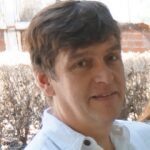Link to Pubmed [PMID] – 37505731
Link to DOI – 10.3390/toxins15070462
Toxins (Basel) 2023 Jul; 15(7):
Humans have faced poisonous animals since the most ancient times. It is recognized that certain animals, like specific plants, produce toxic substances that can be lethal, but that can also have therapeutic or psychoactive effects. The use of the term “venom”, which initially designated a poison, remedy, or magic drug, is now confined to animal poisons delivered by biting. Following Louis Pasteur’s work on pathogenic microorganisms, it was hypothesized that venoms could be related to bacterial toxins and that the process of pathogenicity attenuation could be applied to venoms for the prevention and treatment of envenomation. Cesaire Phisalix and Gabriel Bertrand from the National Museum of Natural History as well as Albert Calmette from the Institut Pasteur in Paris were pioneers in the development of antivenomous serotherapy. Gaston Ramon refined the process of venom attenuation for the immunization of horses using a formalin treatment method that was successful for diphtheria and tetanus toxins. This paved the way for the production of antivenomous sera at the Institut Pasteur, as well as for research on venom constituents and the characterization of their biological activities. The specific activities of certain venom components, such as those involved in blood coagulation or the regulation of chloride ion channels, raises the possibility of developing novel therapeutic drugs that could serve as anticoagulants or as a treatment for cystic fibrosis, for example. Scientists of the Institut Pasteur of Paris have significantly contributed to the study of snake venoms, a topic that is reported in this review.

